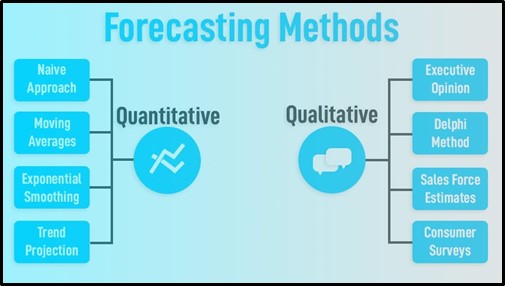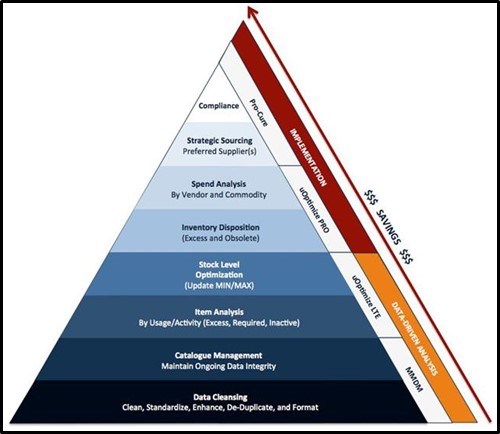Business Analytics
GET HELP INSTANTLY
Place your order to get best assignment help
(since 2006)
Table of Contents
Introduction:
Data:
Forecasting methodology:
Quality of Forecast:
Conclusion:
Introduction:
This report is related to demand forecasting. Demand forecasting means forecasting of demand of customers for services and products. This forecasting is entails the looking for specific sets of data from which the sales are characterised and also, estimate the future trends. Company is basically estimates the data in order to find out the upcoming trend of future demand. From this the experience of customer will improve. This also helps to maximise the companies revenue by reducing the manufacturing of those products which are not in high demand and prevent to stock those inventory as well. The report is about the top-tier telecom company which is stated in Germany however, planning g to centralized its production for all the devices and planning to sell those devices in global market as well. In order to negotiate the best prices, align promotions, manage product line and subsidies with cycle cycle company needs to forecast the demand of six months for future for the devices . This forecasting will also enable the devices provider for better allocation of inventory for every handsets model, increase the rates of recontract and reduce the inventory costs in order to maximise the productivity of sales.
Data:
The demand forecasting project is considered as most complex because this forecasting required at stock keeping unit level. Company Lynx Analytics needs to factor in influence of product bundles and manufactures discounts on the demand of the customers. In order to forecast the data company needs historical data for inventories and sales for every stock keeping unit and channel of distribution, however, the carrier did not follow the particular consistent method in order to identify the devices across the systems(Anastassopoulouet al. 2020). Lynx Analytics needs to find out the way in order to pull the data which is appropriate and taken from the relevant sets of data. Also, the major analysis is that company also need to predict the demand for new products which do not have any history in the market and also, do not have any existing demand.
 MUST READ: Pollution Control Issues and Environmental Concerns of Nuclear Power – Sample
MUST READ: Pollution Control Issues and Environmental Concerns of Nuclear Power – Sample
In order to forecast the data the first step is to collect the data which is reliable from the sources which are using in order to collect the data in order to characterize the device on the basis of sales, promotion, inventories and other factors as well. In order to achieve this, Lynx has used the data pipeline which is automated and work to cleanse and collect the data. Lynx Analytics needs to find out the way in order to pull the data which is appropriate and taken from the relevant sets of data. Company Lynx Analytics needs to factor in influence of product bundles and manufactures discounts on the demand of the customers. Also, Lynx Analytics also learn the techniques which are used to predict the customer demand for the devices which are already in the market. This approached has been incorporated from the google trends input in order to forecast the demand for models of handsets.
Forecasting Methodology:
This case study is followed by the excel sheet which has calculated the DOX and PR ratio of the demand of mobile and the graph has been represented for the same. The demand forecasting model is delivered by the lynx Analytics within the six months of startup of project. The solution which is integrated and automated by the Lynx Analytics into the operations of the customer and also, provide the prediction at all stock keeping unit sales in Germany. The forecasting has been done for the six months in advance with the accuracy of 80%. With this method of forecast the carrier was also able for better allocation at Stock keeping unit level of inventories handset, Sales percentage also increased by 18%. Lynx Analytics needs to find out the way in order to pull the data which is appropriate and taken from the relevant sets of data. Company Lynx Analytics needs to factor in influence of product bundles and manufactures discounts on the demand of the customers(Percet al. 2020). Also, Lynx Analytics also learn the techniques which are used to predict the customer demand for the devices which are already in the market. Below are the three methodology of demand forecasting.
Figure 1: Methods of forecasting
Demand Shaping and Sensing:
This methodology has been used to analyse the data of demand in order to identify the sales patterns, customer preferences and shipments as well. Also, Lynx Analytics has been doing analysis historical data of sales and also, forecast the data the for future events such as launching the brand new products in the market which has not been create any market(Hu et al. 2020).
 MUST READ: Advantages and challenges of extracting manganese nodules from the ocean floor under technical, ecological and economic considerations – Sample
MUST READ: Advantages and challenges of extracting manganese nodules from the ocean floor under technical, ecological and economic considerations – Sample
Optimisation of Inventory:
As it has been earlier stated that Lynx Analytics has been gained the insights about demand and supply so that the company can reduce the manufacturing of those inventory which is not in dem and of low demand and also, it will help to prevent the high demand product’s deletion. This also helps to maximise the companies revenue by reducing the manufacturing of those products which are not in high demand and prevent to stock those inventory as well(Makridakiset al. 2018). The report is about the top-tier telecom company which is stated in Germany however, planning to centralized its production for all the devices and planning to sell those devices in global market as well.
Figure 2: Strategies for Inventory Optimisation
Forecasting of Demand:
Lynx company analyse and forecast the demand of particular services and products. Also, company needs to analyse the data of sales in order to predict the future trends of particular products. These report has also been used to prepare for the future products which are going to be high demands and also, work to improve the experience of customers and needs to work on profit maximisation(Chang et al. 2019).
Quality of Forecast:
Forecasting is considered as the spouse for the company. Company can not live with forecasting and without forecasting. Anticipating the requirements and conditions of future which are considered as the key to success for future. In the industries of manufacturing there are some major forecast which are necessary to make decisions related to market demand and conditions. There are many approaches which company can follow in order to develop the plans which are mutually agreeable and also, able to take the responsibilities of the actions done by the company these are :Collaborative forecasting, planning and replenishment.
There are many limitations involved in demand forecasting. However, some are the major limitations which are experienced by almost every company. It has also been earlier discussed that it is hard for every company to predict the future(Bertozziet al. 2020). Though, company assign the forecaster on pay roll however, they will also not forecast accurately. This has been analysed that the it is not always necessary that this results are accurate or not.
In order to improve the forecasting in company ,company needs not to rely on isolated data. The collection of data needs to be accurate and also, the data which is collected should be as per the requirement. If the data is not accurate it will create the confusion regarding manufacturing and stocking of inventory(Taylor and Letham, 2018).
Conclusion:
This report has been concluded that the proper forecasting of demand enables the better utilisation of resources and planning for the business which needs to be competitive. Forecasting in a company is considered as the integral part of the management of demand as it provides the better estimation of future demand and from these basis company can make the better decision which are fruitful for every business. Company Lynx Analytics needs to factor in influence of product bundles and manufactures discounts on the demand of the customers. In order to forecast the data company needs historical data for inventories and sales for every stock keeping unit and channel of distribution, however, the carrier did not follow the particular consistent method in order to identify the devices across the systems. Lynx Analytics needs to find out the way in order to pull the data which is appropriate and taken from the relevant sets of data. It has been stated that in a company if the sales and demand are not matched then it will result in excessive of stock and inventory and also, will reduce the goodwill and profit of the company. In Lynx both the quantitative and qualitative methods were available in order to forecast the demand in a better way. Though, it has also, been stated that it is not necessary that the forecast is always been accurate. However, management needs to monitor the forecasting and find out the errors and take the necessary decision in process of forecasting.
This report has also been concluded that the demand forecast which has been made in tend of isolation is mostly inaccurate. There are many approaches which company can follow in order to develop the plans which are mutually agreeable and also, able to take the responsibilities of the actions done by the company these are :Collaborative forecasting, planning and replenishment. The main objective of these are to to maximise the profit and sales of the company by generating proper demand forecasting data.
References
Anastassopoulou, C., Russo, L., Tsakris, A. and Siettos, C., 2020. Data-based analysis, modelling and forecasting of the COVID-19 outbreak. PloS one, 15(3), p.e0230405.
Bertozzi, A.L., Franco, E., Mohler, G., Short, M.B. and Sledge, D., 2020. The challenges of modeling and forecasting the spread of COVID-19. Proceedings of the National Academy of Sciences, 117(29), pp.16732-16738.
Chang, M.F., Lambert, J., Sangkloy, P., Singh, J., Bak, S., Hartnett, A., Wang, D., Carr, P., Lucey, S., Ramanan, D. and Hays, J., 2019.Argoverse: 3d tracking and forecasting with rich maps. In Proceedings of the IEEE/CVF Conference on Computer Vision and Pattern Recognition (pp. 8748-8757).
Hu, Z., Ge, Q., Li, S., Jin, L. and Xiong, M., 2020. Artificial intelligence forecasting of covid-19 in china. arXiv preprint arXiv:2002.07112.
Makridakis, S., Spiliotis, E. and Assimakopoulos, V., 2018. Statistical and Machine Learning forecasting methods: Concerns and ways forward. PloS one, 13(3), p.e0194889.
Perc, M., GorišekMiksić, N., Slavinec, M. and Stožer, A., 2020.Forecasting covid-19. Frontiers in Physics, 8, p.127.
Taylor, S.J. and Letham, B., 2018. Forecasting at scale. The American Statistician, 72(1), pp.37-45.

 MUST READ:
MUST READ: 